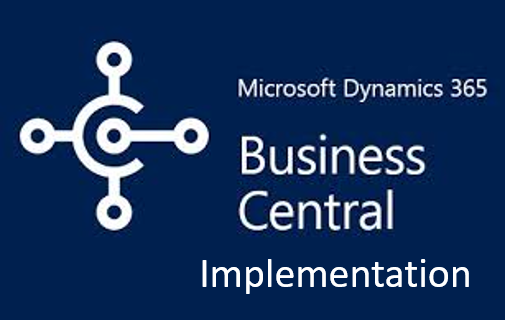Seamless Transition: A Guide to Successful Business Central Implementation

Microsoft Dynamics 365 Business Central, a comprehensive enterprise resource planning (ERP) solution, has emerged as a valuable tool for businesses looking to streamline their operations and gain better control over their financials, supply chain, and overall business processes. In this article, we will explore the world of Business Central implementation, its significance, key strategies, and the benefits it brings to organizations.
The Significance of Business Central Implementation
Microsoft Dynamics 365 Business Central is a robust and versatile ERP solution designed to help businesses manage their finances, supply chain, sales, and customer service more effectively. The significance of Business Central implementation can be seen in the following aspects:
-
Streamlined Operations: Business Central is designed to automate and optimize various business processes, making operations more efficient and reducing manual tasks.
-
Data-Driven Decision-Making: The platform provides real-time insights and analytics, allowing organizations to make informed decisions based on data rather than guesswork.
-
Scalability: Business Central can adapt to a business’s growth, ensuring it remains a valuable solution as a company expands.
-
Integration: It integrates with other Microsoft applications, like Office 365, creating a unified ecosystem for seamless collaboration and communication.
-
Compliance and Security: Business Central is built on the Microsoft Cloud, offering robust security measures and compliance certifications to safeguard sensitive data.
-
Customer Engagement: It provides tools to enhance customer engagement and service, helping businesses build and maintain strong customer relationships.
Strategies for Successful Business Central Implementation
To ensure a successful Business Central implementation, organizations need to consider key strategies and best practices. Here are some crucial steps to follow:
-
Assessment and Planning: Start with a thorough assessment of your organization’s needs and objectives. Define clear goals for the implementation, and create a detailed plan that outlines the scope, budget, and timeline.
-
Team Formation: Assemble a dedicated implementation team that includes key stakeholders, IT professionals, and end-users. Ensure that team members are well-trained and understand the goals of the project.
-
Data Preparation: Clean and organize your existing data to ensure a smooth migration into Business Central. This step may involve data cleansing, transformation, and validation.
-
Customization and Configuration: Customize the solution to match your specific business processes and requirements. Business Central is highly flexible and can be tailored to fit your organization’s unique needs.
-
Testing: Rigorous testing is crucial to identify and address any issues or bugs. Conduct thorough testing to ensure that the solution functions as intended.
-
Training and Change Management: Invest in training for your team to ensure they are proficient with the new system. Implement change management practices to facilitate a smooth transition.
-
Deployment: Deploy the solution in phases, starting with smaller segments and gradually expanding. Monitor performance and address any issues that arise during deployment.
-
Continuous Improvement: Post-implementation, focus on continuous improvement. Monitor the system’s performance, gather user feedback, and make enhancements as needed.
Benefits of Business Central Implementation
-
Improved Efficiency: Business Central automates manual tasks, streamlining operations and reducing the risk of errors, which ultimately leads to increased efficiency.
-
Data-Driven Decision-Making: Real-time insights and analytics enable better decision-making, as organizations can quickly access and analyze data.
-
Enhanced Customer Engagement: With tools for customer service and engagement, businesses can build stronger relationships and deliver better service.
-
Scalability: As a business grows, Business Central can scale with it, ensuring that the ERP system remains a valuable asset.
-
Integration: Integration with other Microsoft applications simplifies collaboration and communication, increasing productivity.
-
Compliance and Security: Business Central offers robust security measures and compliance certifications, ensuring data security and regulatory compliance.
Real-World Examples of Business Central Implementation
Let’s explore a couple of real-world examples to understand the impact of Business Central implementation:
Case Study 1: Manufacturing Company
A medium-sized manufacturing company was struggling with inefficient manual processes, including inventory management and production planning. By implementing Microsoft Dynamics 365 Business Central, the company achieved the following:
- Automated inventory management, reducing overstock and stockouts.
- Streamlined production planning and order processing, leading to shorter lead times.
- Improved accuracy in financial reporting and analysis.
As a result, the company significantly increased its operational efficiency, reduced costs, and improved customer satisfaction.
Case Study 2: Distribution Company
A distribution company faced challenges in managing its supply chain and tracking product deliveries. Business Central allowed the company to:
- Implement real-time tracking of deliveries and supply chain activities.
- Optimize inventory management by automating reorder points and replenishment.
- Reduce manual errors and improve customer service.
The distribution company experienced a substantial increase in operational efficiency, reduced lead times, and enhanced customer satisfaction.
Conclusion
Business Central implementation represents a strategic move for organizations looking to streamline operations, improve efficiency, and enhance customer service. The significance of this transition extends beyond cost savings; it encompasses improved efficiency, better decision-making, enhanced customer engagement, and the ability to scale with business growth.
In an increasingly competitive business landscape, the efficiency and effectiveness of an organization’s ERP system can make a substantial difference in its ability to adapt to market changes and customer demands. Microsoft Dynamics 365 Business Central empowers organizations to navigate these complexities, positioning them for greater success and resilience in a dynamic and demanding business environment.



